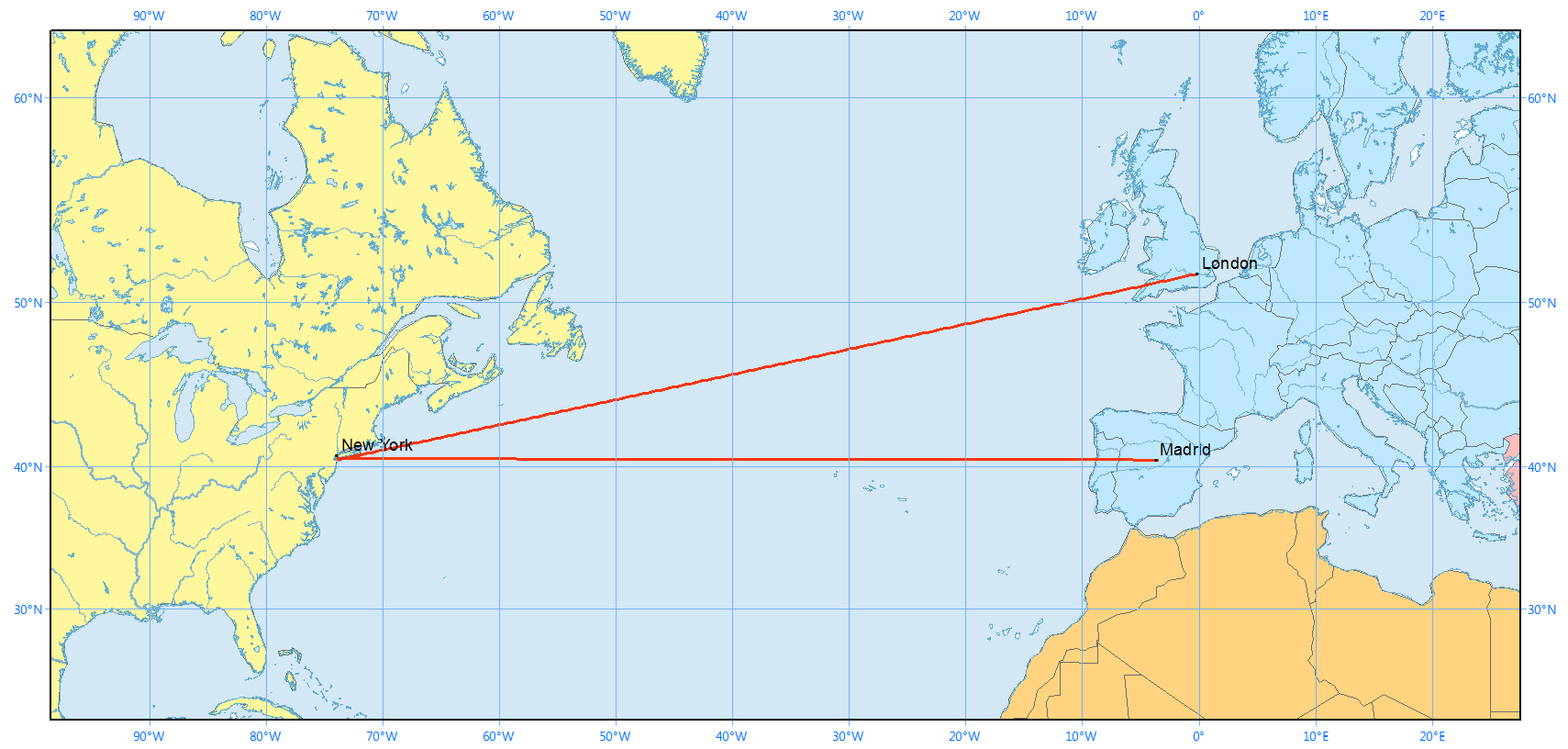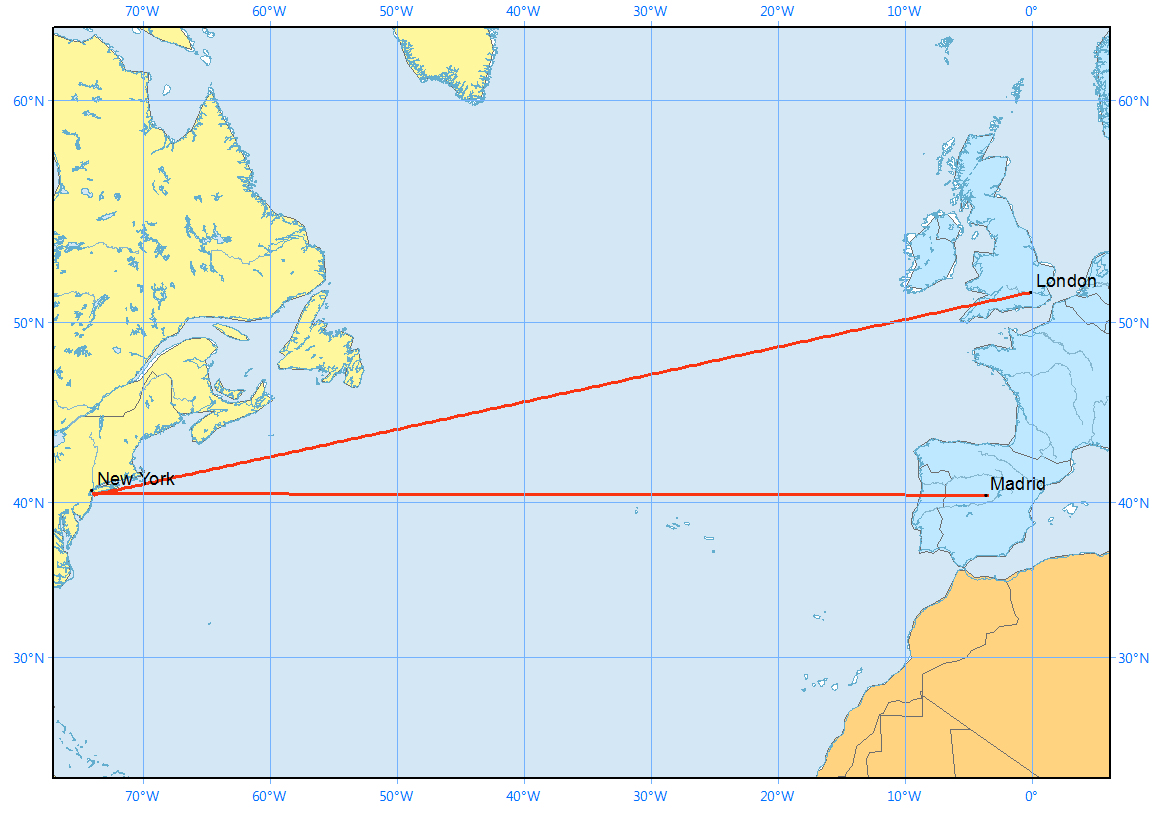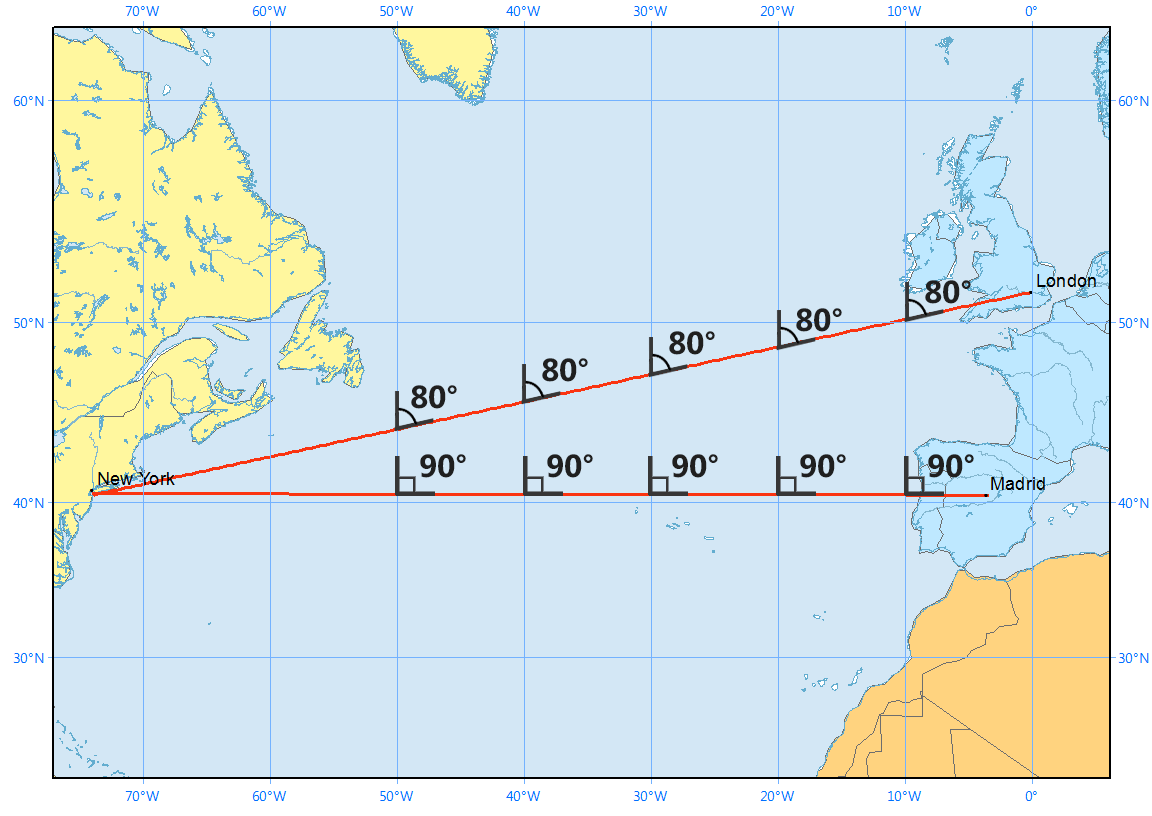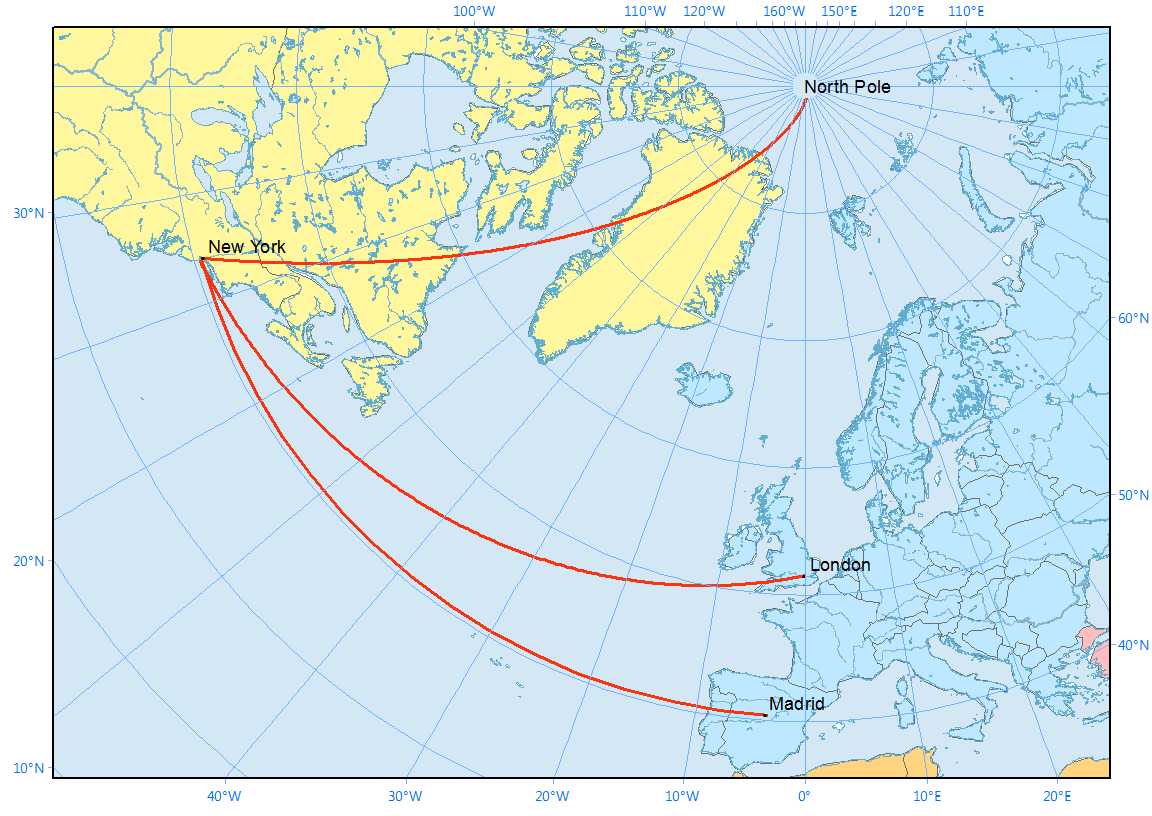
Why Rhumb Lines are not the Shortest Path
When pilots want to fly in a constant track direction, they'll follow rhumb lines (or loxodromes).Rhumb lines have constant bearings and cross all meridians at the same angle.
Despite how rhumb lines look as if they are the shortest distance in certain map projections, they aren't when traveling long distances on a sphere like the Earth. This is because the shortest distance is that of a great circle.
Now that you have a definition of a rhumb line, let's look into it in a bit more detail.
Rhumb Lines on Map Projections
A rhumb line on a Mercator projection is a straight line. In the example below, two rhumb lines extend from New York to Madrid and London.
We illustrate a rhumb line cutting all meridians at the same angle in a Mercator projection below:

Here is how they look in the North Pole Azimuthal Equidistant map projection with a rhumb line to the North Pole. They look quite different, don't they?

During short routes, the difference in distance between rhumb lines and great circles is almost unnoticeable. One of the problems with navigating a great circle is the need for constant changes in the course direction. That makes rhumb lines a simple method for getting from A to B.
Summary: What Are Rhumb Lines?
As an imaginary line on the earth's surface, rhumb lines are a standard method of plotting a ship's course on a chart.However, a rhumb line is not the shortest distance between two points on a sphere. The shortest distance is called a great circle.
In mathematical terms, rhumb lines are called loxodromes from the Greek term for running at an inclined angle.
In the advanced toolbar in ArcGIS, you can construct these types of lines as geodesic lines. Try it out for yourself.
READ MORE:
